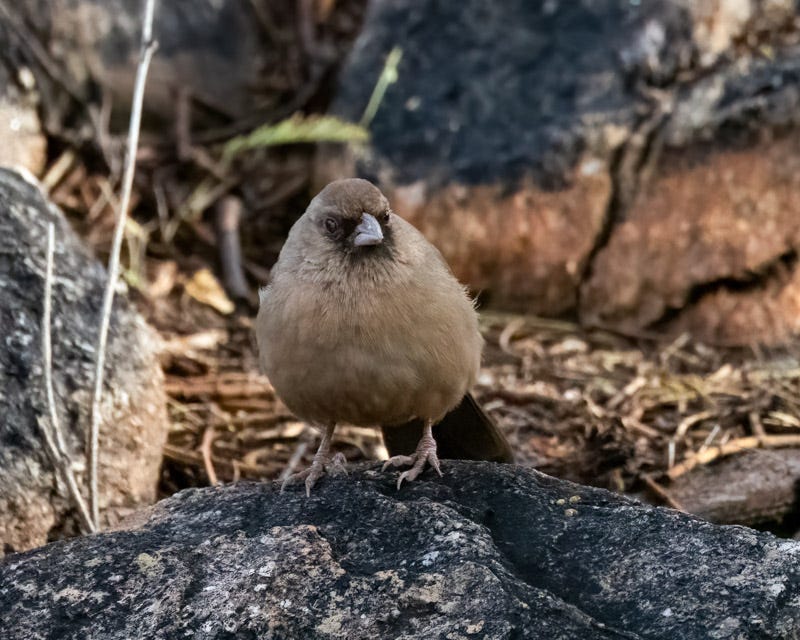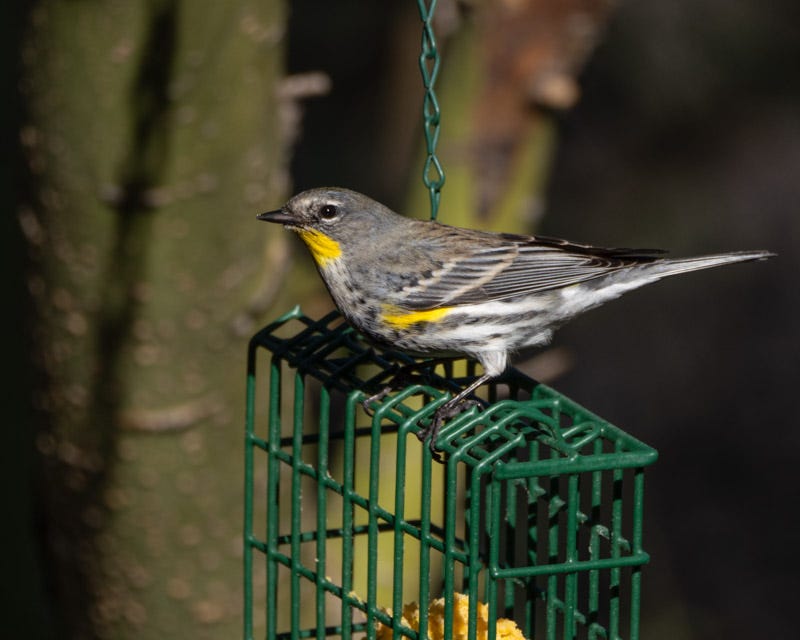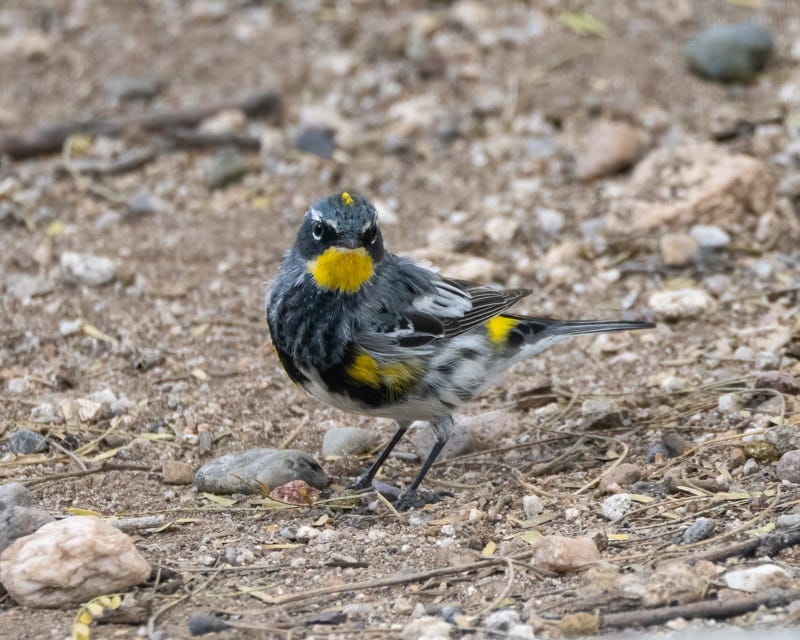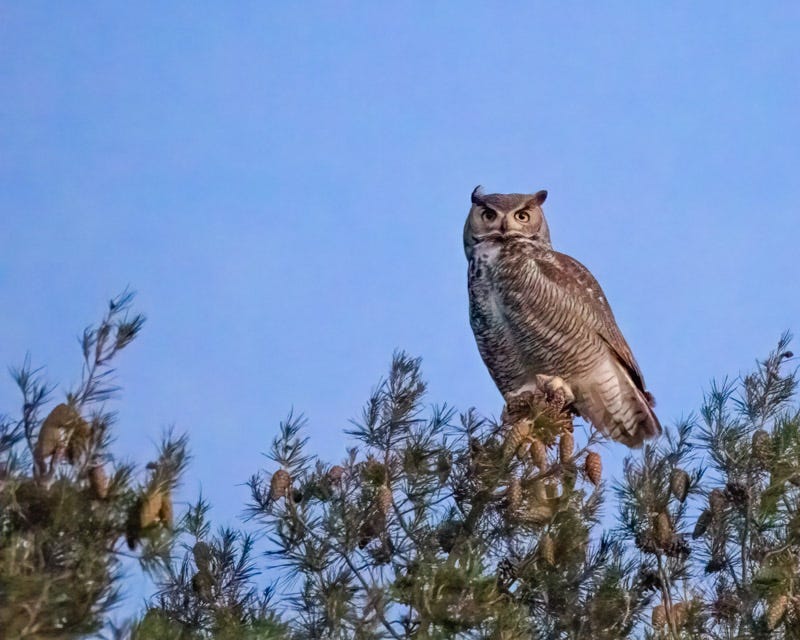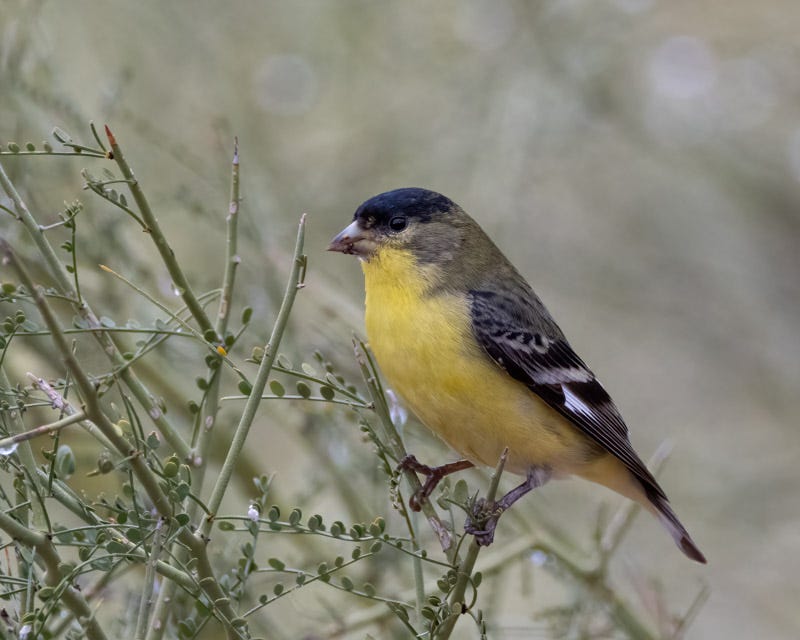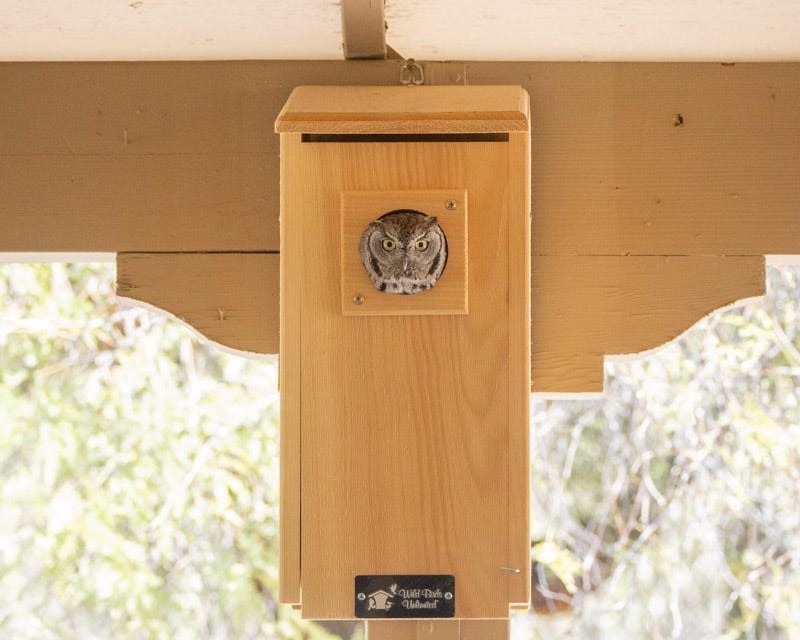Some Birds in My Backyard
And some great news
It's time to share some of the photos I've taken in my yard and that I have been saving. In January, a Cardinal was busy feeding. He usually sat in a dead cholla before flying in to the seed feeder. One morning while he was waiting for the right time to get a seed, he needed to scratch an itch.
The female Cardinal was often nearby. She has a very limited amount of red feathers but her whole body has a hint of a reddish/orange wash to it. She still has the same orange bill as the male and just a bit of black on her face that meets the bill.
Abert's Towhees are birds of the Sonoran Desert that are found primarily in Arizona. Their sandy brown plumage matches their desert environment and they have a black patch around their bill. Abert's Towhee pairs usually remain bonded for life, so if you see one Abert's Towhee, the second one is usually nearby.
In February, I saw a "new" bird in my yard. Yellow-rumped Warblers are a common wintering bird in Southern Arizona but for some reason I had never seen one in my yard until this year. Birdnote has more on these warblers.
This week several Yellow-rumped Warblers were in the yard again. It's nice to have them around. Matt Griffiths, with Tucson Audubon, has a nice essay on this species.
Last Month I learned that a pair of Great Horned Owls had begun nesting in my neighborhood. Great Horned Owls do not build their own nests, they use the nests that hawks or ravens had used the prior year. Although this old Cooper's Hawk nest is buried deep and out of sight in an Aleppo Pine, for a few days the female Owl would go to the top of her tree after sunset to meet up with her partner.
If you live in the Tucson area and have a neighborhood Great Horned Owl nest, consider yourself fortunate. I'd love to hear about it.
Lesser Goldfinches are in Tucson year-round. They are one of the easiest 'yard-birds' to attract. Hanging a nyjer thistle seed feeder will bring in Lesser Goldfinches within a few days.
While I was photographing the Costa's Hummingbird, the Lesser Goldfinches were nearby and taking advantage of the seed feeders. Male Lesser Goldfinches have a black cap. The amount of black on their backs varies.
The exciting news in my yard is the addition of a nesting Western Screech Owl. I previously had another nest box posted on the side of my house and it was used by Western Screech Owls for a number of years. Three years ago, right as nesting season began, Comcast Cable spent a day jack-hammering a trench right below the nest box. Needless to say the owls left the box that evening and had not returned for several years. Until now!!!
The female Western Screech Owl is in this new box while the male spends his days nearby inside of the porch pillar of my neighbor's house. I thought an owl pair might have moved in but Tuesday was the first day I saw the female sticking her head out of the nest box opening during the daytime.
She spent about 20 minutes just looking around the porch. Perhaps she was just seeing it for the first time during daylight hours. Perhaps she was just looking around just to look around. In any case, it was fun watching her from inside my kitchen/dining area just ten feet away.
After ducking back in, the Western Screech Owl looked out of the box two more times that afternoon (that I noticed). Once she lays eggs, she will incubate them for about a month before they hatch. Then it will take about another month until the owlets fledge.
I'm hoping everything will work out for this couple. As you can imagine, along the way I'll try to get some nice photographs to document this story and I will definitely share them with you.




